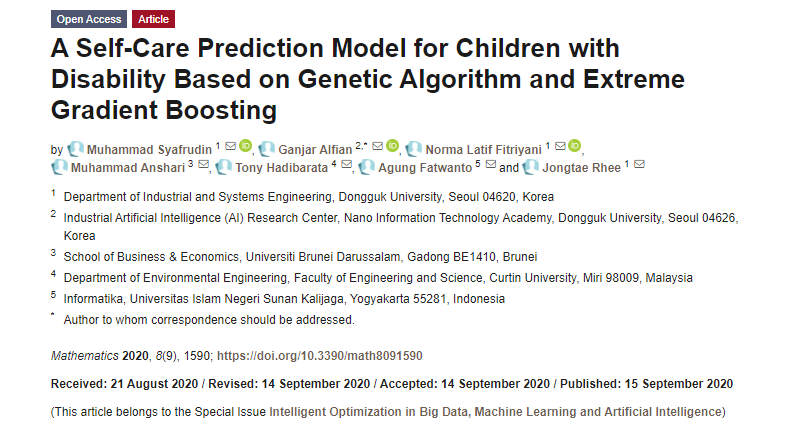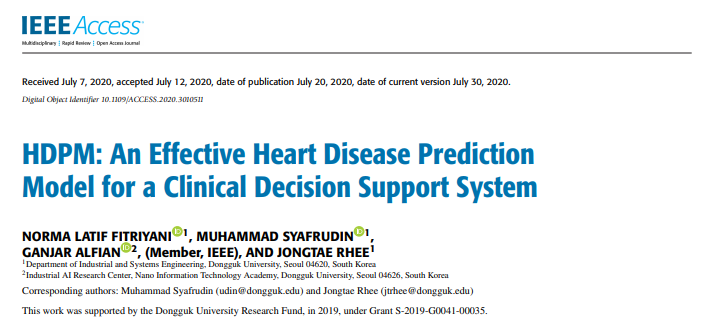
Abstract
Detecting self-care problems is one of important and challenging issues for occupational therapists, since it requires a complex and time-consuming process. Machine learning algorithms have been recently applied to overcome this issue. In this study, we propose a self-care prediction model called GA-XGBoost, which combines genetic algorithms (GAs) with extreme gradient boosting (XGBoost) for predicting self-care problems of children with disability. Selecting the feature subset affects the model performance; thus, we utilize GA to optimize finding the optimum feature subsets toward improving the model’s performance. To validate the effectiveness of GA-XGBoost, we present six experiments: comparing GA-XGBoost with other machine learning models and previous study results, a statistical significant test, impact analysis of feature selection and comparison with other feature selection methods, and sensitivity analysis of GA parameters. During the experiments, we use accuracy, precision, recall, and f1-score to measure the performance of the prediction models. The results show that GA-XGBoost obtains better performance than other prediction models and the previous study results. In addition, we design and develop a web-based self-care prediction to help therapist diagnose the self-care problems of children with disabilities. Therefore, appropriate treatment/therapy could be performed for each child to improve their therapeutic outcome.
Published in: Mathematics
DOI: 10.3390/math8091590
